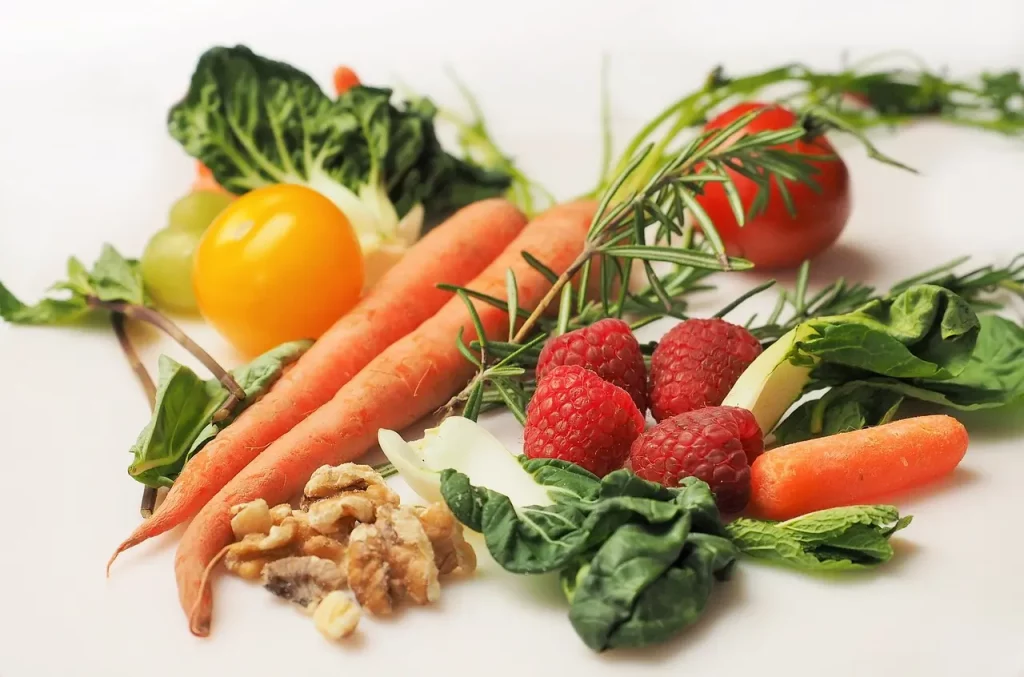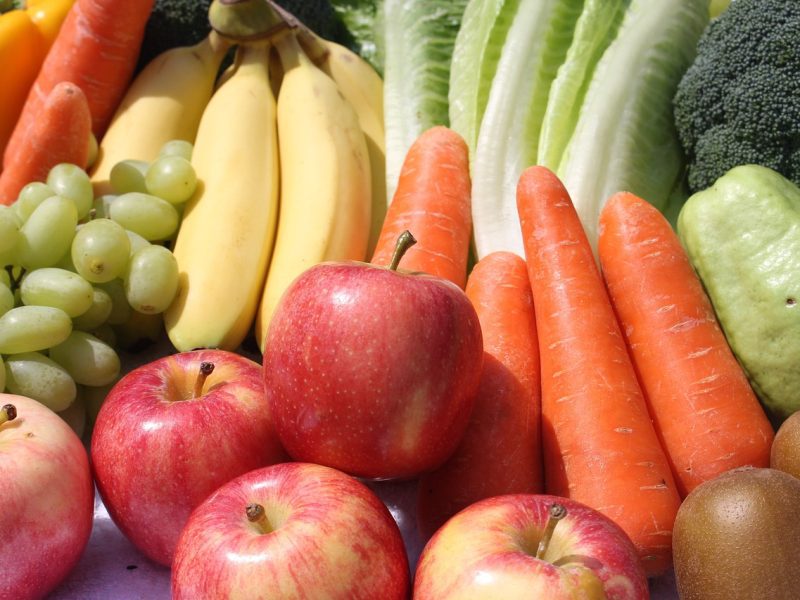High blood pressure, or hypertension, is a common condition that affects millions of people around the world. It occurs when the force of blood against the walls of the arteries is consistently too high, which can lead to serious health problems such as heart disease, stroke, and kidney failure. Fortunately, there are many ways to manage high blood pressure, including making dietary changes. One approach that is effective in lowering blood pressure is the DASH diet. In this comprehensive guide, we will explore what the DASH diet is, how it works to lower blood pressure, and provide tips for following the diet successfully. Whether you’re looking to improve your overall health or manage a specific health condition, this guide will provide you with the information you need to start incorporating the DASH diet into your daily routine.
What Is the DASH Diet?

The DASH (Dietary Approaches to Stop Hypertension) diet is a dietary pattern that emphasises the consumption of whole foods that are rich in nutrients that lower blood pressure, such as potassium, magnesium, and fibre. The diet was originally developed by the National Heart, Lung, and Blood Institute (NHLBI) as a means of helping people manage high blood pressure, but it has since been recognized as a healthy dietary pattern that can benefit anyone looking to improve their health.
The DASH diet is not a rigid set of rules, but rather a flexible and balanced approach to eating that encourages the consumption of a variety of foods from different food groups. The diet makes use of whole foods, such as fruits, vegetables, whole grains, lean proteins, and low-fat dairy products. The diet also limits the consumption of foods that are high in saturated and trans fats, added sugars, and sodium.
The DASH diet is not a low-carb or low-fat diet, but rather a moderate macronutrient diet that emphasises the importance of choosing healthy sources of carbohydrates, fats, and proteins. The diet is also rich in plant-based foods and encourages the consumption of vegetarian or vegan meals.
Overall, the DASH diet is a balanced and flexible approach to eating that lowers blood pressure and improve overall health. The diet is not a quick fix, but rather a long-term approach to healthy eating that can provide lasting benefits. In the next section, we will explore how the DASH diet works to lower blood pressure.
How Does the DASH Diet Lower Blood Pressure?

High blood pressure is often related to poor diet and lifestyle choices, including consuming too much sodium and not enough potassium, magnesium, and fibre. The DASH diet addresses these issues by emphasising the consumption of whole foods that are rich in these nutrients, as well as limiting the consumption of foods that are high in sodium.
The Key Components of the DASH Diet
- Consuming a diet rich in fruits and vegetables: Fruits and vegetables are naturally low in sodium and high in potassium, magnesium, and fibre. These nutrients have been shown to lower blood pressure and improve overall heart health.
- Choosing whole grains over refined grains: Whole grains are a good source of fibre, which has been shown to lower blood pressure. They also provide nutrients such as magnesium, which can help to lower blood pressure.
- Consuming lean proteins: Lean proteins, such as chicken, fish, and legumes, are a healthy source of protein that can help to lower blood pressure. These foods are also low in saturated fat, which can be harmful to heart health.
- Choosing low-fat dairy products: Low-fat dairy products, such as milk and yoghurt, are a good source of calcium, potassium, and magnesium. These nutrients have been shown to lower blood pressure.
- Limiting sodium intake: Sodium is a mineral that is often found in processed and packaged foods. Consuming too much sodium can lead to high blood pressure. The DASH diet limits sodium intake to no more than 2,300 milligrams per day, or 1,500 milligrams per day for individuals with high blood pressure.
Scientific studies have shown that the DASH diet can significantly lower blood pressure, with some studies showing a reduction of up to 11 mm Hg in systolic blood pressure (the top number) and up to 6 mm Hg in diastolic blood pressure (the bottom number). The diet has also been shown to improve overall heart health, reduce the risk of heart disease and stroke, and help with weight management.
In the next section, we will explore what foods are included in the DASH diet and provide examples of DASH-friendly meals and snacks.
What Can You Eat?

The DASH diet emphasises the consumption of whole foods that are rich in nutrients that lower blood pressure. The following are examples of foods that are included in the DASH diet:
- Fruits: Apples, bananas, oranges, berries, mangoes, and grapefruits are all good choices.
- Vegetables: Broccoli, carrots, spinach, sweet potatoes, tomatoes, and peppers are all DASH-friendly.
- Whole grains: Brown rice, quinoa, whole wheat bread, and oatmeal are all good choices.
- Lean proteins: Chicken, turkey, fish, tofu, and legumes (beans, lentils, peas) are all healthy sources of protein.
- Low-fat dairy products: Milk, yoghurt, and cheese are all good sources of calcium, potassium, and magnesium.
- Nuts and seeds: Almonds, walnuts, sunflower seeds, and chia seeds are all good sources of healthy fats, fibre, and protein.
- Healthy fats: Olive oil, avocado, and fatty fish (such as salmon) are all good sources of healthy fats.
The DASH diet also limits the consumption of foods that are high in saturated and trans fats, added sugars, and sodium. Examples of foods to limit or avoid on the DASH diet include:
- Processed foods: Processed foods are often high in sodium and added sugars.
- Fast food: Fast food is often high in saturated and trans fats, as well as sodium.
- Sugary drinks: Sugary drinks, such as soda and juice, are high in added sugars.
- Sweets: Sweets, such as candy and baked goods, are high in added sugars and often contain saturated and trans fats.
It’s important to note that the DASH diet is a flexible and balanced approach to eating, and there is no one-size-fits-all approach. You can change the diet to fit your own dietary preferences and needs. In the next section, we will provide examples of DASH-friendly meals and snacks.
Tips for Following the DASH Diet

Following the DASH diet can be a challenge, especially if your diet is normally high in sodium, processed foods, and unhealthy fats. However, with a little planning and preparation, it is possible to adopt this healthy eating plan.
Tips for following the DASH diet:
- Plan your meals: Planning your meals ahead of time can help you make healthier choices and stick to the DASH diet. Take some time each week to plan your meals and snacks, and make a grocery list to ensure you have all the ingredients you need.
- Prepare your own meals: Cooking your own meals is a great way to control the ingredients and ensure that you are eating a healthy, DASH-friendly diet. Try to cook at home as much as possible, and experiment with new recipes to keep things interesting.
- Read food labels: Reading food labels can help you identify foods that are high in sodium, added sugars, and unhealthy fats. Look for foods that are low in sodium and high in fibre, potassium, and magnesium.
- Choose whole foods: Whole foods, such as fruits, vegetables, whole grains, lean proteins, and low-fat dairy products, should make up the bulk of your diet. Choose these foods over processed and packaged foods, which are often high in sodium, added sugars, and unhealthy fats.
- Use herbs and spices instead of salt: Herbs and spices can add flavour to your meals without adding extra sodium. Experiment with different herbs and spices to find your favourites.
- Limit your intake of sodium: The DASH diet limits sodium intake to no more than 2,300 milligrams per day, or 1,500 milligrams per day for individuals with high blood pressure. To limit your intake of sodium, choose fresh or frozen fruits and vegetables, cook at home, and avoid processed and packaged foods.
- Stay hydrated: Drinking plenty of water can help you stay hydrated and prevent overeating. Aim to drink at least eight glasses of water per day.
Wrapping It All Up
In conclusion, the DASH diet is a well-researched and effective way to lower blood pressure and improve overall health. By emphasising whole foods that are rich in nutrients and limiting the consumption of processed and packaged foods, the DASH diet can help you achieve a healthy and balanced diet. While following the DASH diet can be challenging at first, with a little planning and preparation, it can become a sustainable and enjoyable way of eating. By incorporating the tips outlined in this guide, you can start following the DASH diet today and take a step towards better health and wellbeing. Remember to always consult with your doctor before making any major changes to your diet, especially if you have a medical condition.
Read More
- 3 Reasons Going to Bed Hungry Is Not a Terrible Idea
- The Causes of Acne and How to Treat It
- Manifestation and the Theory of Universal Energy
- 7 Reasons Why Loving Your Job is So Important
- Why Fighting Chronic Stress Is Everybody’s Fight
Disclaimer: The information provided on Healthy Lifestyles for All is intended for general educational purposes only and should not be considered as medical advice. Please consult with your GP or other health professional before making any significant changes to your diet, exercise routine, or any other aspect of your lifestyle. We are not responsible for any adverse effects or consequences resulting from the use of the information provided on our blog.
Comments: I hope you enjoyed reading this post as much as I enjoyed writing it. If you liked it, please leave a comment. If you didn’t like it, disagree with something I have written (I’m okay with that), or think I got something wrong (that’s okay too), please leave a comment as well. We only truly learn from our mistakes, so I am happy to have mine pointed out.
Affiliate Links: Please also note that I may make a small amount of money if you buy one of the products I recommend in any of my blog posts. Rest assured that I have done my own due diligence, and only recommend products that have been tried and tested, and have extremely good feedback. Additionally, many of the products I recommend have 30 or 60-day money-back guarantees, so you can buy in the confidence that if a particular product is not right for you, you can get a refund.



